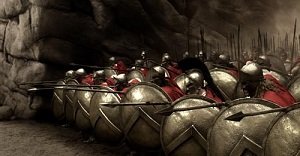
The method was invented by a media strategist Ryan Holiday. The name of the method comes from a war tactic which was established by a Spartan general Brasidas. Unlike his fellow maritime leaders, he fought in a smarter rather than a more fierceful way. He organized fighters to form a square with their backs to the middle where weaker or wounded fighters were, along with strategic supplies. The square moved in the necessary direction, but the condition was to never disturb the shape. When the group of soldiers was attacked, the outward-facing warriors fought back, reinforced by the soldiers in the middle. The group seemed impenetrable to the enemy, which demoralized the entire armies.
Let us step back from the analogy and look at the essay. When you start from an introduction, you establish the initial shape which should always be supported by the paragraphs. Each of your paragraphs represents an idea that is closely tied to the main thesis from the introduction. It is recommended that you sketch the main sentences of your paragraphs first and rewrite them after you have the conclusion. The analogy with the Spartan square does not mean that the ideas within it are weak — consider them rather as strategic supplies.
At the end of your essay, a concluding paragraph should restate the key thesis of the paper, summarize each of the mini-theses, and glue them together. The summary should also place your main idea into the broader context. Looking at the Brasidas’ square from aside makes it seem like a firm and rigid shape, while it might not always look so from the inside. Just as the key soldiers in the square were looking outwards, the conclusion of your essay should turn your thesis to something more general.
Writing an essay often requires a lot of discipline and tactical thinking. This is what the Spartan System is all about. To write an essay according to this System, you need to imagine a square-like structure where the thesis creates the shape, and the conclusion reinforces it; the body of your essay fills this shape. This way, by beginning with an intro and sketching the conclusion, you already have “the skeleton,” and everything else serves either to fill it or support it. That is where you allow your ideas unveil, but never go beyond the shape you have established. What you get in the end is a solid piece with a firm structure of a Spartan square and your body of ideas within it. This is pretty much enough to win you a good grade.
